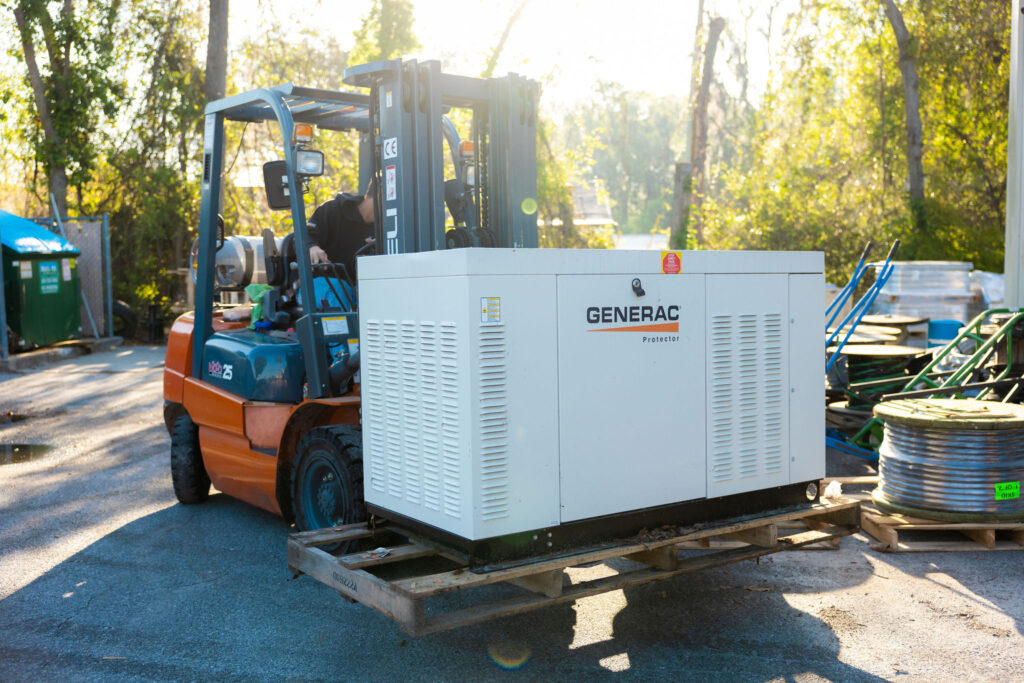A new generator provides a lot of peace of mind. You can rest easy knowing that your home will be protected during a power outage. But now that you have a generator, how can you ensure you get the most out of your investment? The answer is to perform simple generator maintenance tasks throughout the year. As generator experts in Florida and Georgia, we’ll give you our top recommendations for maintaining your generator at home.
Is Maintenance Needed for a Generator?
Like any other machine or device in your home, generators require some maintenance in order to last as long as possible. It might be easier to think of your generator as being similar to a car—it will run for a pretty long time without maintenance, but eventually, you’ll need to refuel or go to the mechanic in order to protect your investment. Generators are no different. While the lifespans of generators vary, with the proper maintenance, a generator can last 30 years or more—some lasting as long as 60 years.
Your Generator Maintenance Checklist
So, how do you get the most out of your investment with a generator? There are some basic things you can do as a homeowner to help maintain your generator.
Check the Oil
Remember how we mentioned your generator is similar to a car? You might find that some of the items on our checklist are familiar to you—the first step being to check the generator’s oil. Checking a generator’s oil is not dissimilar to checking a car’s oil, using the dipstick to test the oil level in the tank. If you notice your generator is low on oil, you can fill it yourself, just make sure to read your owner’s manual to ensure you’re using the correct type of oil. A higher quality oil will help increase your generator’s efficiency.
Change the Air Filter
Your generator’s air filter protects the engine from dust, dirt, and debris. Over time, the filter will become clogged with these debris and need to be replaced to allow proper airflow. Your air filter will tell you how long it should last, but we’d recommend you change your filter at least once a year for the best results.
Perform a Visual Inspection
There are some things you shouldn’t try to fix yourself on your generator, but you can do a visual inspection to see if a call is warranted to your local full-service electrician. We’d recommend visually inspecting the generator’s hoses, belts, and wires. If you notice fraying, cracking, or general wear, you’ll want to call a professional to get these parts repaired or replaced.
Clean around the Area
While your air filter can help protect your generator from debris, you’ll still want to keep the area around the generator clean. Think about your normal HVAC unit—when leaves and twigs are in or around the outside unit, it could lead to damage and poor performance. The same is true for your generator. It runs best when there’s no debris hindering its operation. Furthermore, keeping the area clean is best for your safety, reducing the risk of fire or generator damage.
Replace the Spark Plugs
Your generator uses spark plugs, and after some use, you may find they don’t work as well or will stop functioning completely. If you’re noticing issues with your generator, replacing your spark plugs is a great place to start, especially if you can see physical signs of age on the plugs themselves. This is a relatively easy and cheap repair that you can do on your own, but if you don’t feel comfortable doing it yourself, it’s always best to call a professional to do the replacement for you.
Inspect the Battery
Your generator uses a battery to run, and like any other battery, it’ll eventually need to be replaced. Some signs it’s time to replace your battery include:
Dim lights when the generator turns on.
Visible corrosion on the battery.
Voltmeter is reading below recommended voltage.
You see cracks or leaks from the battery.
Your generator isn’t turning on.
On average, a generator battery will last anywhere from three to five years, so making a yearly battery inspection can help you ensure your battery is still in working condition.
Run the Generator Periodically
By nature, your generator is for emergencies, so it may not be getting frequent use. The last thing you want is for the power to go out just to learn that your generator has an issue.
In order to avoid this situation, we recommend you run your generator about once a month. Make sure everything is working properly and that it powers on for at least 15–30 minutes. This will allow you to catch any performance issues with your generator before an emergency arises. Mark a day on your calendar each month to test your generator—make it something easy to remember, such as the first day of the month or the last.
Schedule a Professional Inspection
Finally, the best thing you can do for your generator’s maintenance is to schedule a professional generator inspection. A professional may be able to catch issues and repairs that the untrained eye may miss. This should be a yearly check-up, and we’d especially recommend having an inspection before hurricane season hits in the south. Better to know your generator works before a storm than to find an issue in the middle of a hurricane.
Keep Your Generator Working for Years to Come with Holly Electric
Whether you’re looking to invest in a new generator or want to maintain your current one, Holly Electric provides generator services for all your home’s needs. We can help you identify any needed repairs early and create a plan to ensure your generator works when you need it most. Schedule a free consultation and quote with us today to get the most out of your generator.

